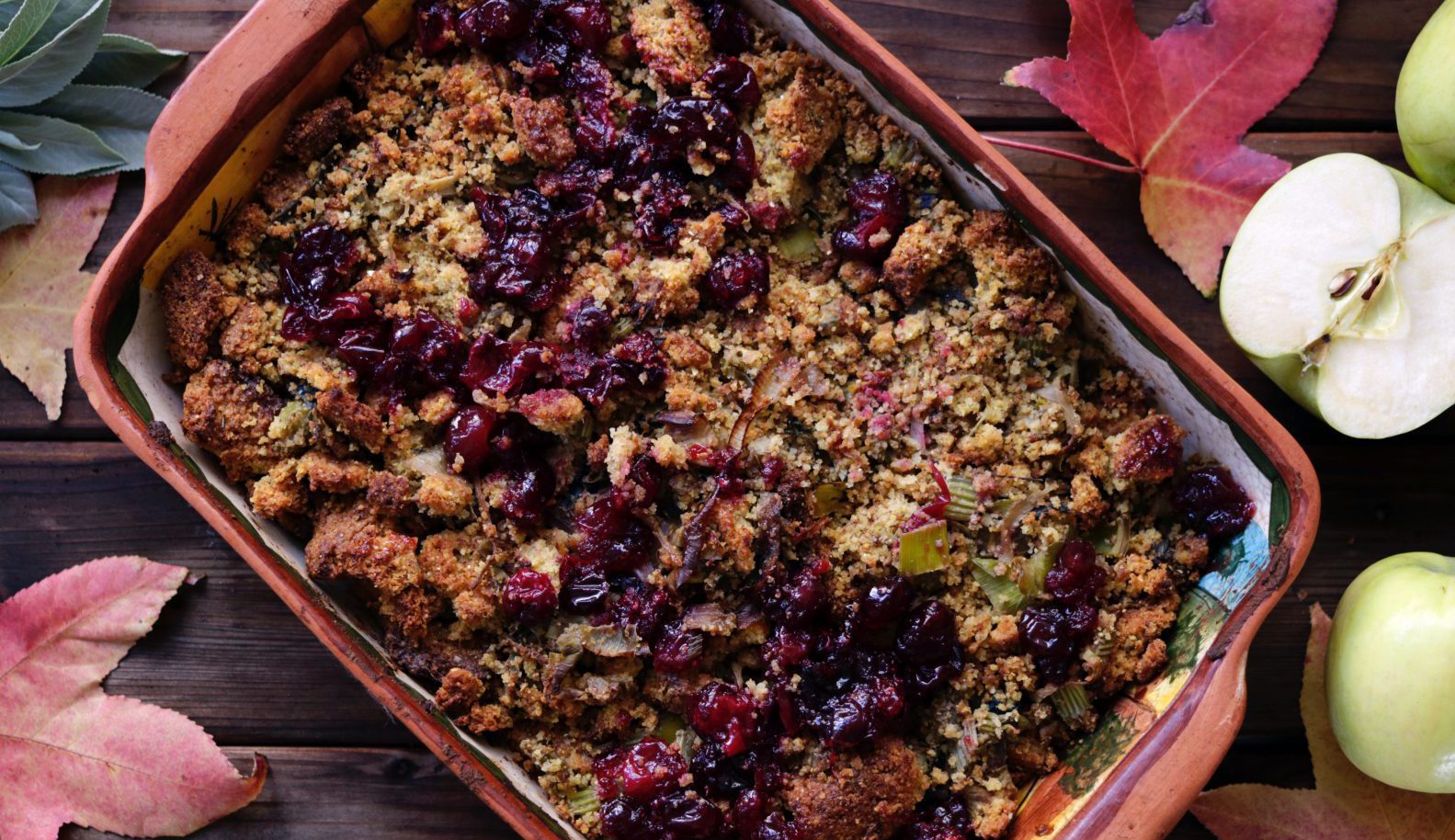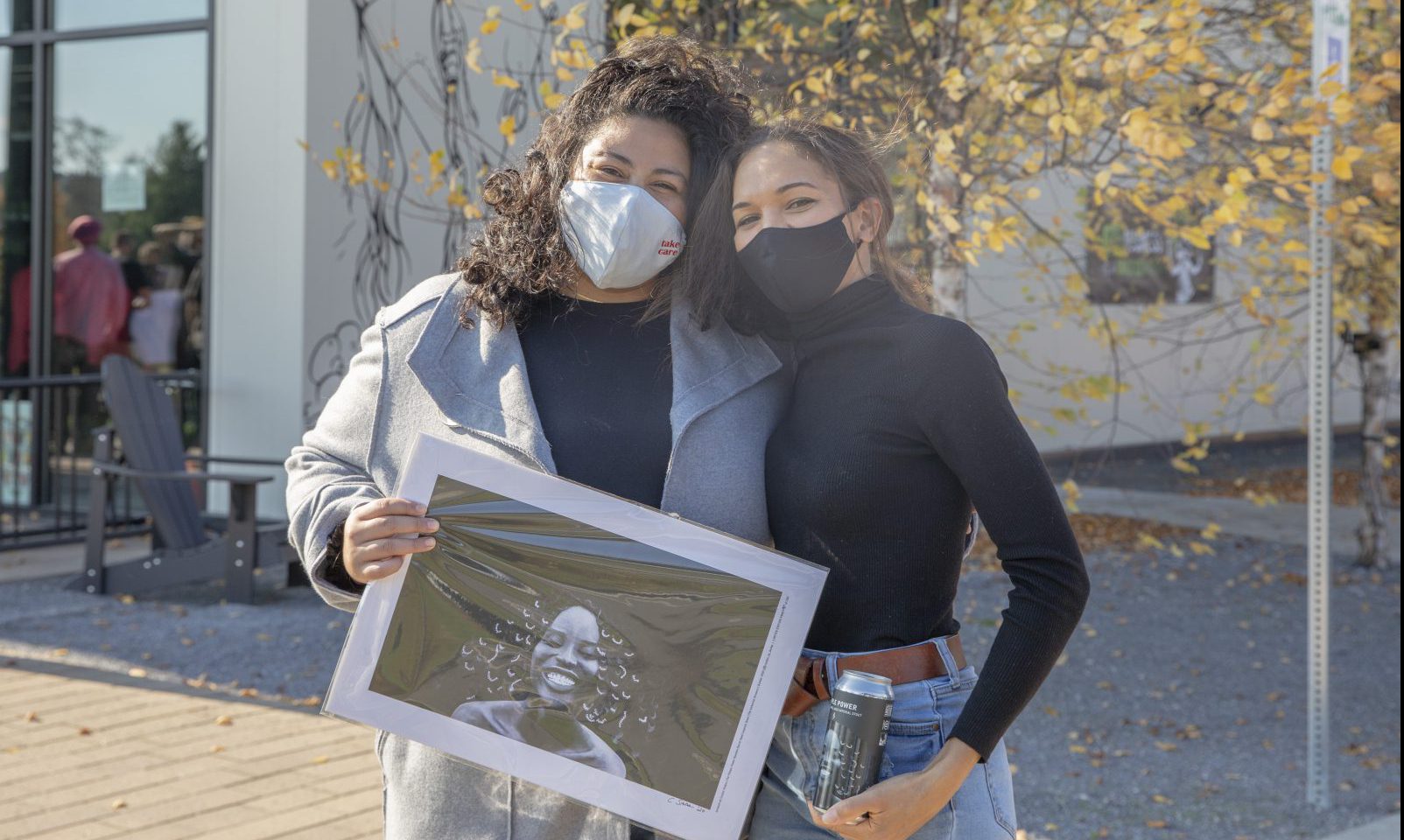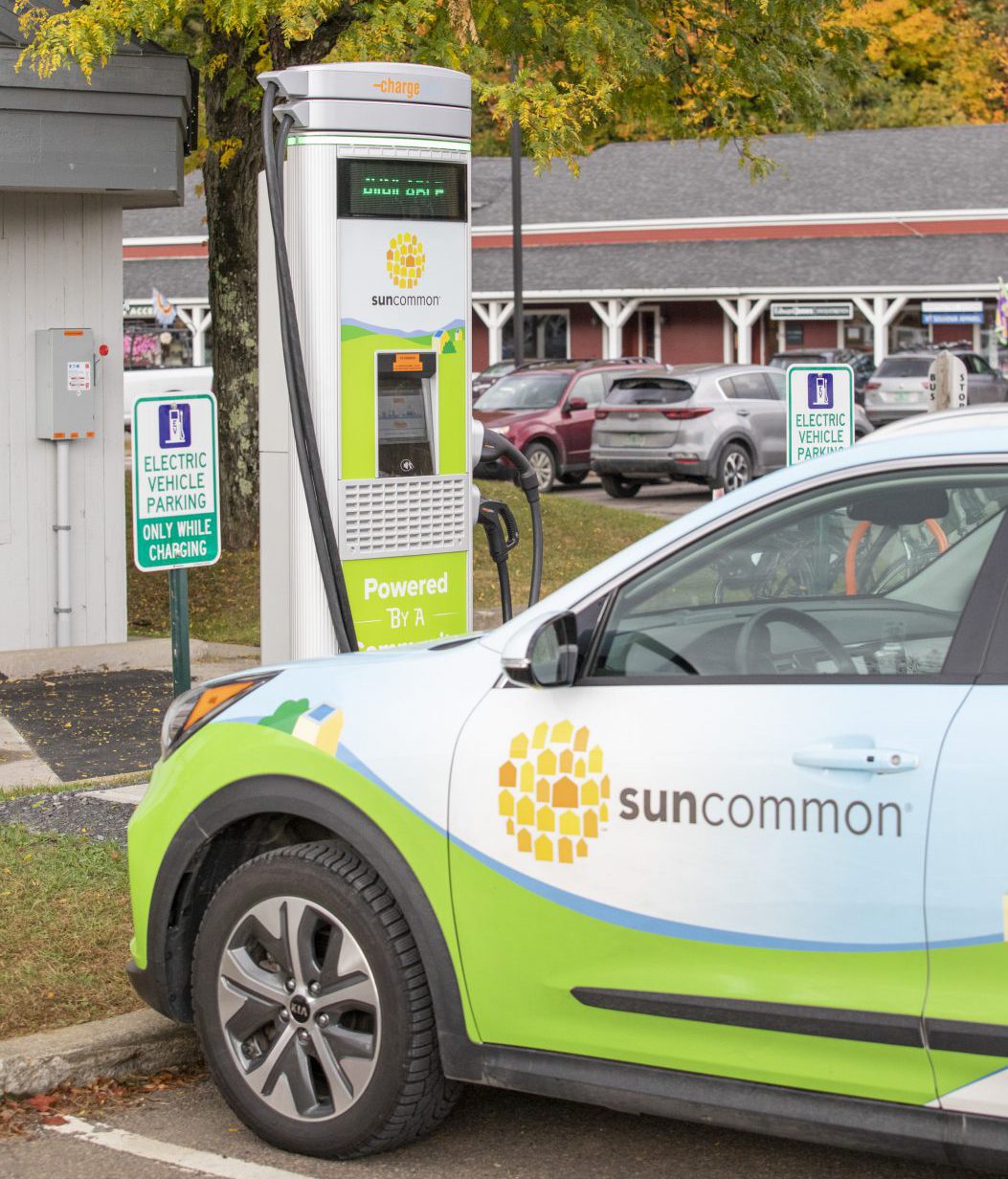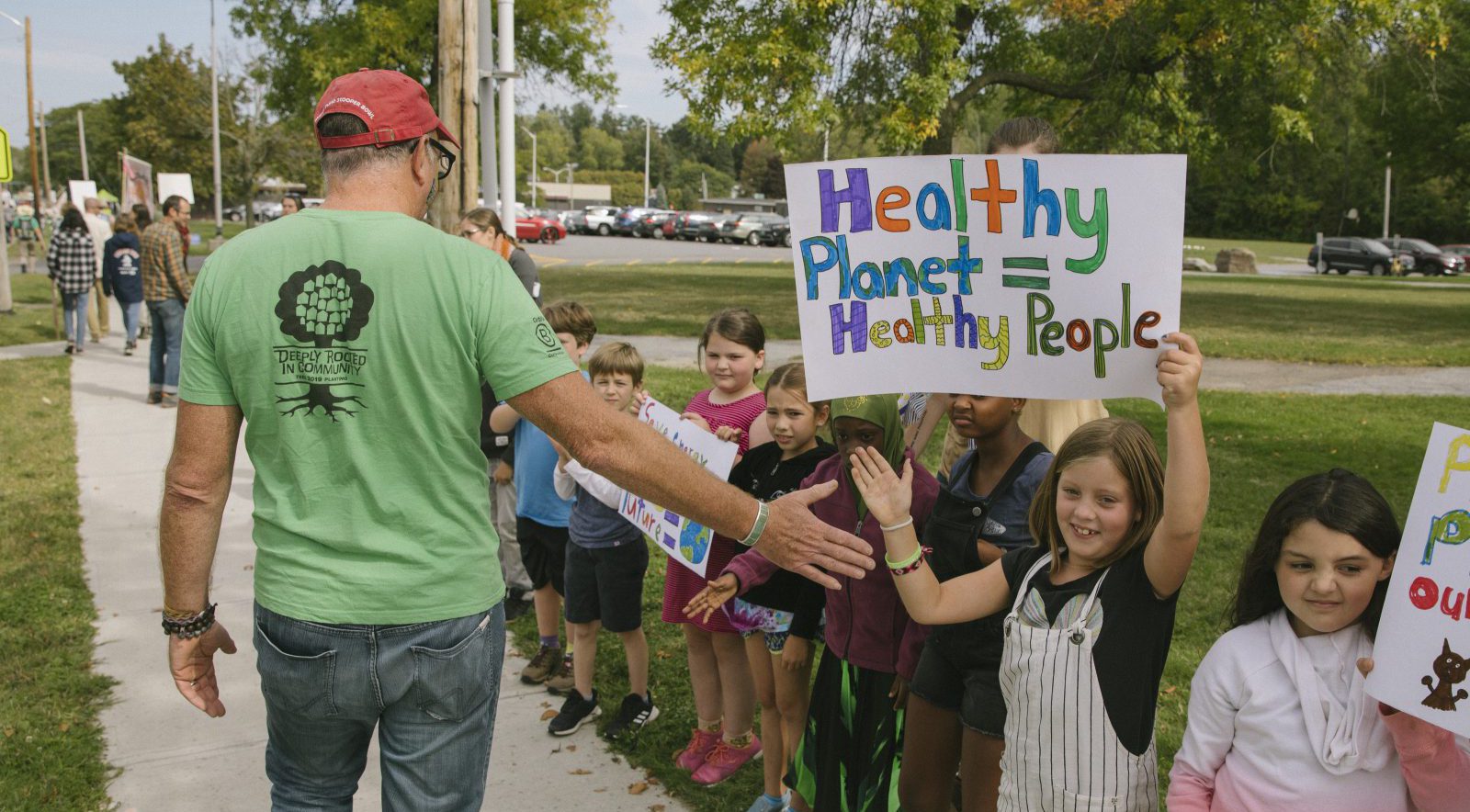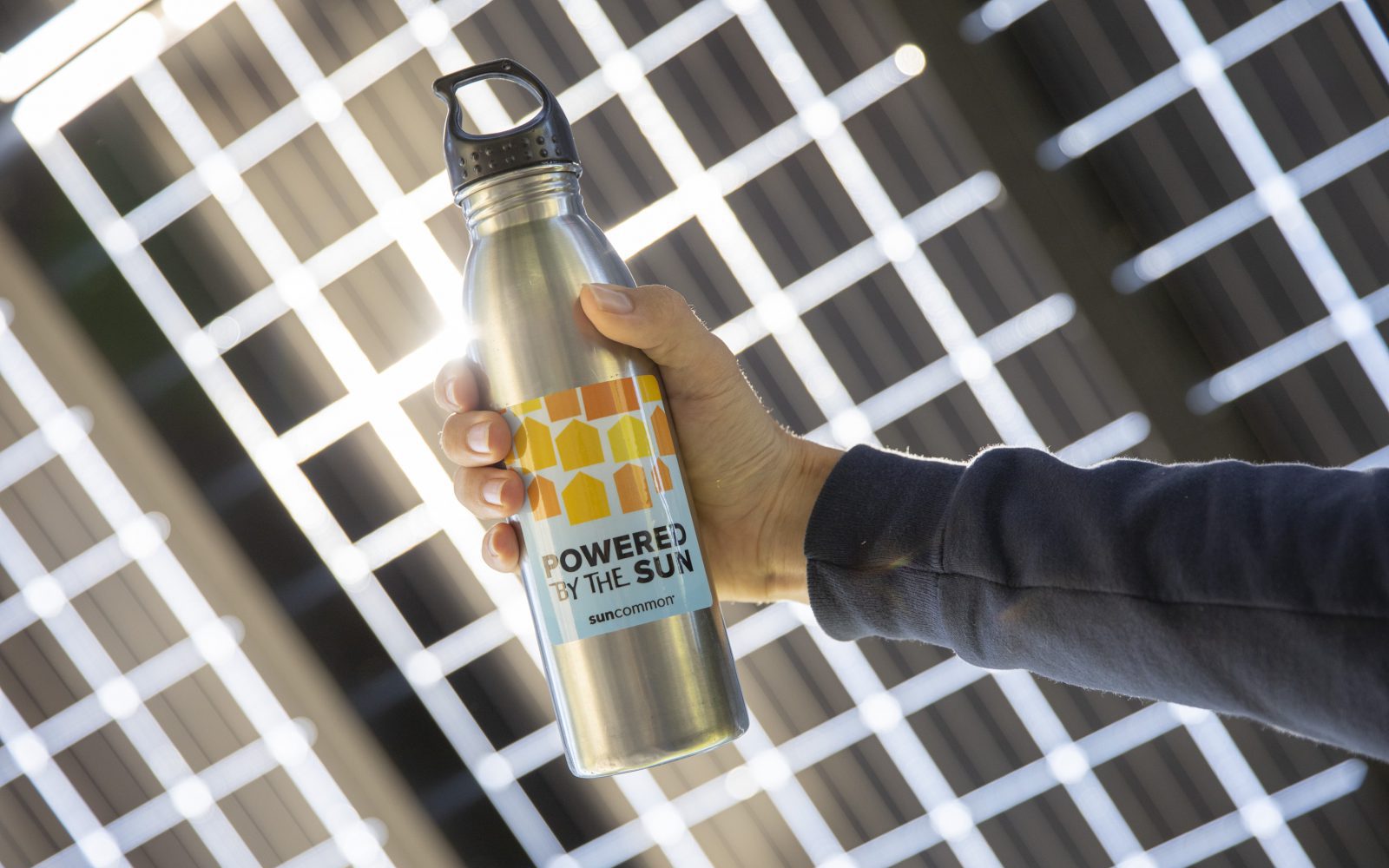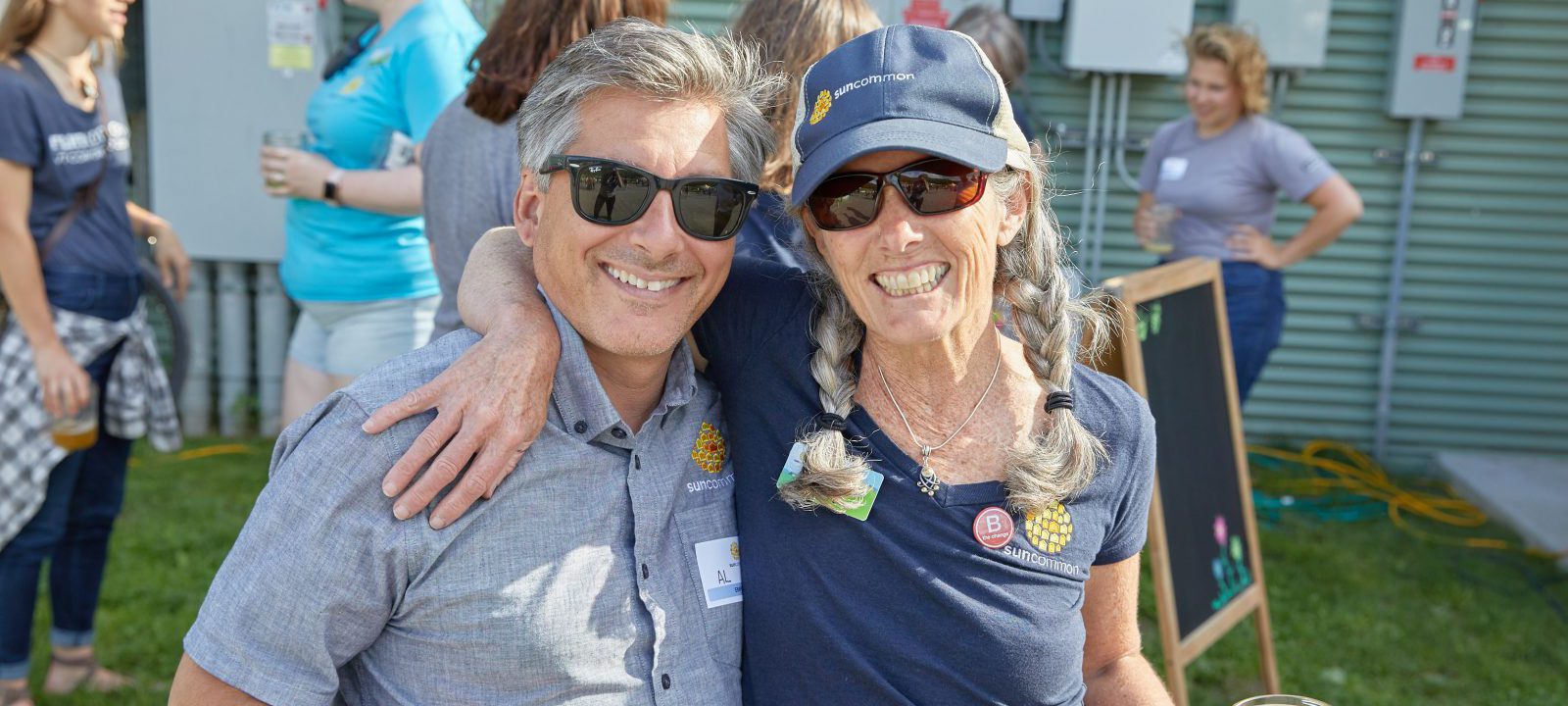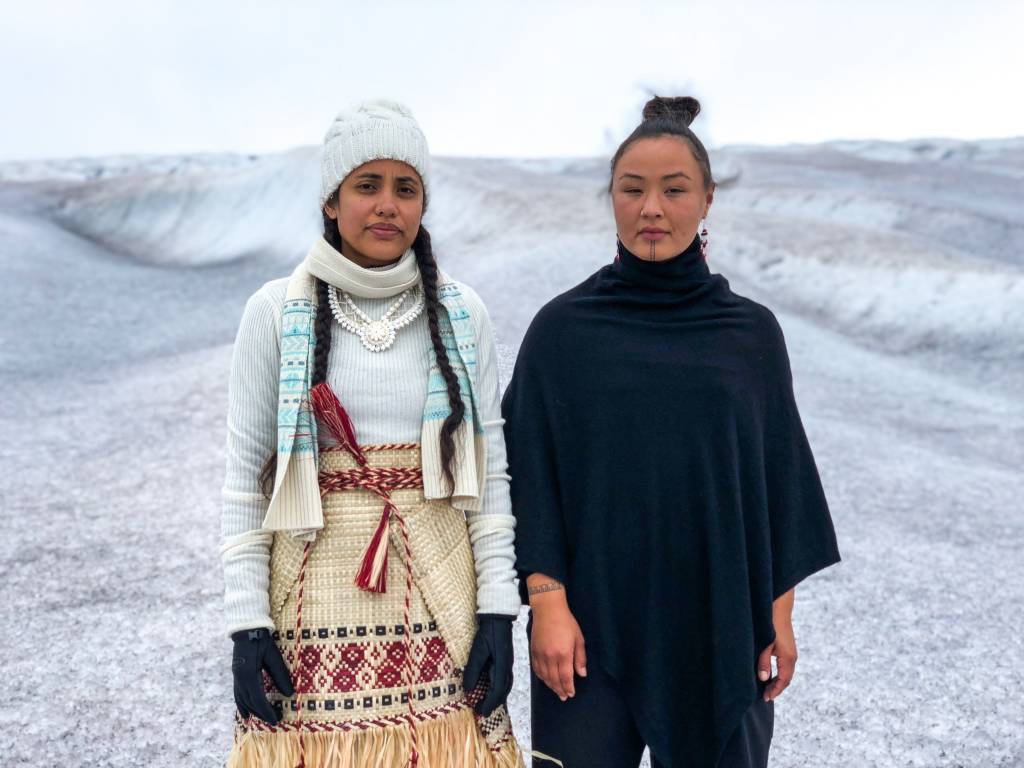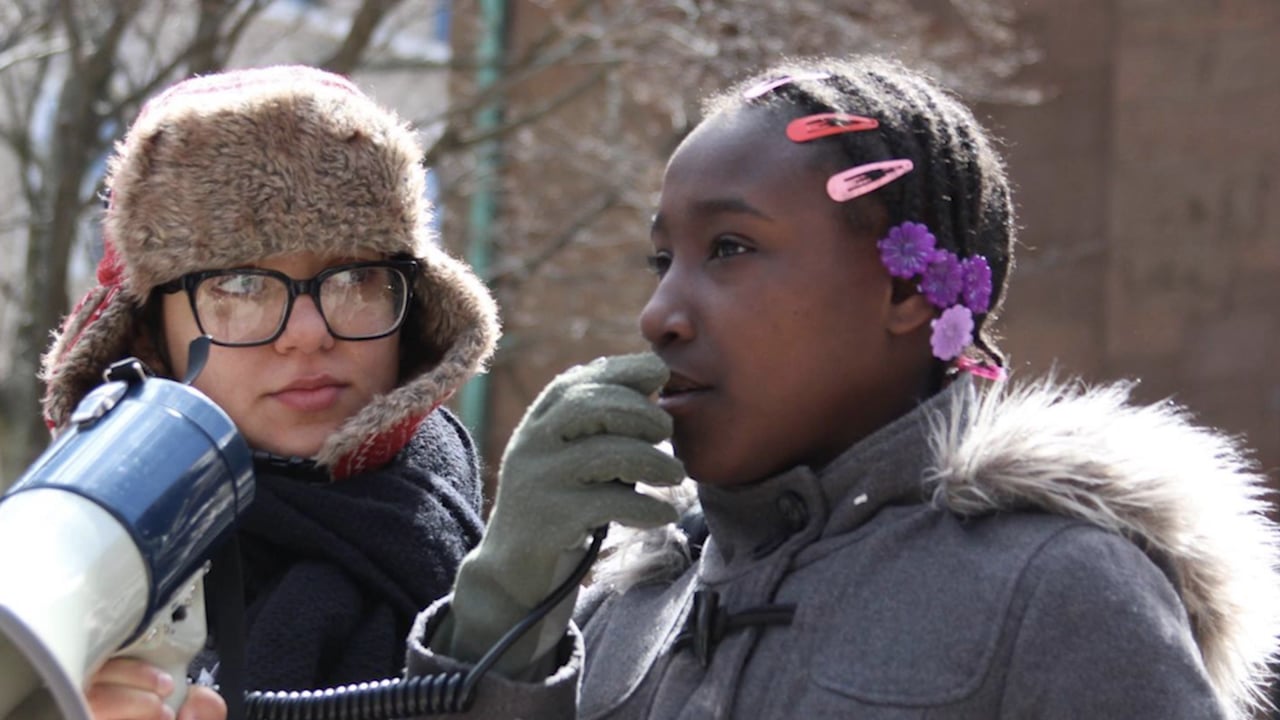Our Favorite Fall Recipes
Holiday gatherings might look a little different this year, but that doesn’t mean you can’t bring something delicious to the table! The SunCommon crew collected some of their favorite fall recipes for you to share with the ones you hold dear.
Carrot Souffle
“My favorite Thanksgiving dish!”
Prep time: 30 minutes
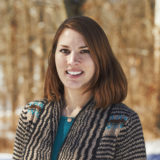

Marlaina Hunter
Marketing
Casserole Ingredients:
- 1 lb Carrots, cooked
- 3 eggs
- 1 teaspoon vanilla
- ½ cup melted butter
- 2 tablespoons flour
- Dash each of nutmeg and cinnamon
- 1 teaspoon baking powder
Topping Ingredients:
- 1 cup corn flakes cereal (crushed)
- ½ cup brown sugar
- 4 tablespoons softened butter
- 1 cup chopped walnuts
Instructions:
Preheat oven to 350°. Cook carrots and puree in food processor. Add eggs and blend. Add sugar, flour, baking powder, butter, spices and blend until smooth. Pour into greased casserole dish. Combine topping ingredients and sprinkle over casserole. Bake 1 hour.


Jarred Cobb
Operations
Ingredients:
- 2 cups almond meal
- 1 cup old-fashioned rolled oats (use gluten-free if sensitive)
- 1/2 cup chopped walnuts
- 1/2 cup currants or raisins, optional
- 2 teaspoons ground cinnamon
- 1/2 teaspoon ground nutmeg
- 1 teaspoon baking soda
- 1/2 teaspoon fine sea salt
- 3 eggs, beaten
- 1 cup grated zucchini (about 1 zucchini)
- 1 cup grated carrot (about 2 carrots)
- 6 tablespoons unsalted butter, melted
- 1/2 cup Grade B maple syrup
- 1 teaspoon vanilla
- Paper muffin cups
Instructions:
Arrange a rack in the center of the oven and preheat the oven to 350°F. Line a 12-cup standard muffin tin with paper muffin cups. In a large bowl, combine the almond meal, oats, walnuts, currants or raisins, if using, cinnamon, nutmeg, baking soda, and salt. In a separate bowl, mix together the eggs, zucchini, carrot, butter, maple syrup, and vanilla. Add the wet ingredients to the dry ingredients, mixing until just combined. Spoon the batter into the muffin cups filling each to the brim. Bake until the muffins are nicely browned on top and a toothpick inserted in the center of a muffin comes out clean, about 25 to 35 minutes.
Ultimate Apple Pie
“It fills the space with the warm scent of apples and spices, and nothing says fall like apples and spices!”


Zoila Turcios
Sales
Pie Crust Ingredients:
- 2 ½ cups of flour
- ¼ cup of sugar
- ½ Tsp of salt
- 1 cup of diced cold unsalted butter
- ¼ cup of ice water
Pie Filling Ingredients:
- 1 cup of unsalted butter
- 2 Tbsp of flour
- 1 cup of sugar
- ¼ of water
- 7 medium sized apples, sliced. (I use macoun and snowsweet apples)
- 1 ½ Tbsp of cinnamon
- 1 Tsp of pumpkin pie spice
Instructions:
Pie Crust: Place all dry ingredients in a food processor, pulse until all are combined. Add in the butter, making sure not to handle butter too much to keep it from warming up. Pulse until it appears like a dry sand mixture. Slowly add the ice water, pulse one more time.
Place the dough on a board or counter, press it all until you mold it into a ball, or square, cover it and place it in the fridge for 2 hrs or overnight.
Pie Filling: In a pan, melt the butter on med-high, as it begins to zimmer, add the flour, whisk in the sugar and water, bring to a boil, lower the heat, until it becomes the consistency of honey. In a separate bowl, add the apple slices, once sauce is cooled a bit, add it to the apples, along with the cinnamon and pumpkin pie spice. Fold all ingredients together.
Then… Roll out the pie crust to your desired size, place on the pie plate, add filling, decorate it as you wish. Preheat the oven to 425°. Place pie in the oven for 15 minutes. Then, without opening the oven, lower heat to 350° and bake for an additional 45 minutes.
Cheese Bread
“This makes for the most amazing toast or soup companion. If you’re new to bread, this is also a super easy way to start.”
Prep time: 30 minutes


Patrick McCormack
Storytelling
Ingredients:
- 1/4 cup butter; softened
- 1-3/4 cup warm (100-115°F) water
- 3/4 cup gruyere or cheddar, freshly grated
- 1 tsp tabasco or Frank’s
- 1 tbsp granulated sugar
- 1/4 cup parmesan cheese, freshly grated
- 5 to 6 cups all purpose flour
- 1 tbsp salt, or to taste
- 1 pack active dry yeast
Instructions:
Dissolve the yeast with the sugar in 1/4 cup of the warm water and allow it to proof. In a large bowl, mix 5 cups of flour and the salt. Make a well in the center and add the remaining 1-1/2 cups warm water, the butter, the Tabasco, and the yeast mixture. Stir with a wooden spoon or spatula or with your floured hands until the dough is well amalgamated. Turn out on a heavily floured board (use 1/2 cup flour) and knead for 10 to 12 minutes or until the dough is smooth, elastic, and rather satiny in texture and all the flour on the board is absorbed; add flour if you need it. Place the dough in a buttered or oiled bowl and turn to coat on all sides. Cover with a towel and let rise in a warm, draft-free spot until doubled in bulk, 1-1/2 to 2 hours or slightly more.
Punch down the dough, turn it out on a lightly floured board, and knead in the cheeses. When thoroughly blended, cut the dough in half and let rest for 10 minutes, then roll out each half into a rectangle about 11 x 6 inches and let rest for 2 or 3 minutes more. Roll each triangle up, pinching the edges as you do so, and tucking in the ends so that the loaf measures about 4-1/2 x 7-1/2 inches. Place the dough in two well buttered tins, cover, and let rise in a warm spot until the bread has reached the top of the tin, or slightly higher, or has more or less doubled in size.
Bake on the center of the middle rack of a preheated 375° oven for approximately 30 minutes, or until the loaves sound hollow when removed from the tins and rapped with the knuckles on both top and bottom. Bake directly on the oven rack, without the tins, for a few minutes to firm the crust. Cool the bread on racks before slicing.
Cranberry Bread
“This recipe was, and still is, an all-time favorite of mine growing up. It is extra special because it comes from a book my parents used to read to me when I was little: Cranberry Thanksgiving by Harry & Wende Devlin. It reminds me of the fall and is something I plan to make for my future kiddos.”
Prep time: 30 minutes


Lisa Borducci
Sales
Ingredients:
- 2 cups flour
- 1 cup sugar
- 1 ½ tsp baking powder
- 1 tsp salt
- ½ tsp baking soda
- ¼ cup canola oil
- 1 egg
- 1 tsp grated orange peel
- ¾ cup orange juice
- 1 ½ cup raisins
- 1 ½ cup chopped fresh cranberries
- 1 ½ cup walnuts
Instructions:
Preheat oven to 350° and grease a 9 x 5 x 3 loaf pan – set aside. Mix all the dry ingredients (flour, sugar, baking powder, salt, baking soda) into a large bowl. Combine canola oil, egg, orange juice, and orange peel in a separate large bowl. Pour wet ingredients into the large bowl of dry ingredients and mix thoroughly. Fold in raisins, chopped fresh cranberries and walnuts into the mixture. Pour mixture into greased loaf pan. Bake for 1 hour at 350°, or until a toothpick in center comes out clean. *BAKING TIP* If the bread is browning on top but is still wet on the inside, cover with aluminum foil and continue to bake until the inside is dry/cooked through.
Pumpkin Brownies
“I’ve got a sweet tooth… Plus, this recipe is a super simple upgrade to your average brownies.”
Prep time: 10 minutes
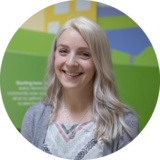

Maddy Brydges
Storytelling
Ingredients:
- Brownie mix of your choice
- 1/2 can pumpkin (not pumpkin pie filling)
- 6 oz cream cheese
- 3 tablespoons sugar
- 1 tablespoon pumpkin pie spice
- 1/2 cup milk chocolate chips
Instructions:
Preheat your oven to whatever instructions are on the brownie mix box. 350° works well. Make the brownie mix in a separate bowl. Follow the directions on the box. Add the chocolate chips to the brownie mix. Stir them in and set the bowl and set to the side. Mix the pumpkin, cream cheese (softened), sugar, and pumpkin pie spice in another bowl. Mix until very smooth. Spray your pan with cooking spray before starting. Pour half of the brownie mix into the pan and spread out so the entire bottom of the pan is covered. Next add the pumpkin. You can either spoon the pumpkin filling onto the brownie in chunks or spread it out evenly. Cover the pumpkin with the rest of the brownie batter and smooth out the top.
Now you’re ready to bake! Since you’re adding some depth with the pumpkin mix, you’ll need to cook a bit longer than what the box mix says (~12 extra minutes for the pan I used). To check if brownies are done, dip a fork into the middle of the brownies. If the fork comes out clean, they’re done!
Love these recipes? Print them out as recipe cards and keep them forever, or share them with a friend:
The Importance of People Power: Q&A with Local Artist, Crystal Stokes
Crystal Stokes is a Morrisville, Vermont native with a gift for the arts. As a lover of nature, family, and knowledge, Crystal’s upbringing in Vermont was dynamic, and as a biracial woman and artist, she has leaned on her work to express her thoughts and find beauty in the world.
Crystal has been creating realistic portraits since she was in grade school and was recently chosen to produce a very special piece for the Alchemist Brewery’s new “People Power” Beer, with proceeds benefiting the ACLU.
Zoila Stokes, SunCommon Solar Advisor and sister-in-law to Crystal, hosted a Q&A session with Crystal earlier this week to discuss her inspiration behind the People Power can, the importance of local Certified B Corporations (like SunCommon and the Alchemist), and what this project means to her.
(Note: A full-text version of this interview is available below.)
Using Business as a Force for Good
Certified B Corporations are businesses that meet the highest standards of verified social and environmental performance, public transparency, and legal accountability to balance profit and purpose. B Corps are accelerating a global culture shift to redefine success in business and build a more inclusive and sustainable economy. Learn about “How We Roll” as a Certified B Corp here.
Q: Have you always been involved with art? When did you start?
A: I started drawing when I was young, as most of us do. I’ve always been artistically inclined, but in my mind, it was more of a form of therapy than an idea for a career choice. It wasn’t until 2013 that I actually allowed myself to take the time and explore pencil in charcoal and started sketching portraits. A year later I went to the store and bought some inexpensive black and white acrylic paint and taught myself how to work with the medium to create the photo realistic portraits I paint today.
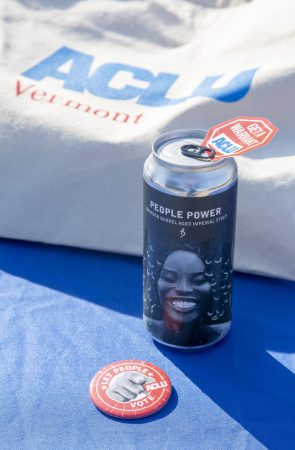

Q: What mediums do enjoy creating in most?
A: I prefer working with acrylic black and white paint. The pigments meld well together, allowing more to the imagination and providing a sense of duality.
Q: How did you get involved with this project for the Alchemist?
A: A few years ago I was reading through the Seven Days newspaper and I stumbled across a call to artist for a keg painting event at the Alchemist. I submitted my work and was then asked to be a part of the event. Since then, I’ve worked with Jess Graham, the Art Director, and the Alchemist off-and-on until they reached out to me a few months ago to see if I wanted to create the label for the People Power collaboration.
Q: What was your process creating the art for the can? What inspired you?
A: Art for me has always been an extremely therapeutic and personal process. It’s a place I can go to, and feel safe within my own skin. This is a feeling we don’t all have the luxury to experience. When I was asked to collaborate with the Alchemist to benefit the ACLU, the first word that came to my mind was ‘safety’. I close my eyes and imagine what it would be like to truly feel safe in my own skin, without the judgement and opinions of others consuming my thoughts.
Q: What does it mean to you personally when you see your art being put out into the world, all while contributing to a great cause?
A: Creating this piece was not an easy process; there’s so much emotion that came up. Insecurity, vulnerability, happiness, sadness, anger, and frustration. With all the emotion that comes up, I sometimes [find it] really hard putting my work on display. An artist friend of mine recently said, ‘A piece is not truly finished until it is exposed’. I have recently worked this into my artistic process and I am so grateful to have the opportunity to expose this piece to the world.
We have all experienced such an enormous shift this year, so many things have happened we could not have imagined possible. In a positive light one of those things for me was this opportunity. Had this been last year, this opportunity might not have presented itself. This to me says that our world is evolving and I’m really happy to evolve with it.
Q: What role do you see Certified B Corporations playing in driving forward equity and inclusion?
A: I can’t speak for all B Corps on what they can do to drive inclusion. I do know that having conversations like the one we are having now is a great first step. Asking yourself what you can learn from a situation that might be somewhat vulnerable instead of placing the responsibility on the other person to change.
Being empathetic is not always something that comes natural to us all. One thing that has helped me become more empathetic is showing up for a conversation and leaving my emotions at the door before I walk into the room. Pausing, listening, paying attention to eye movement, body language, and tone, as well as being completely and emotionally available whenever possible have also been helpful tools. We are all continuing to evolve together, whether we like it or not, and I think there’s so many opportunities for us to acknowledge our weaknesses and strengths and grow stronger together.
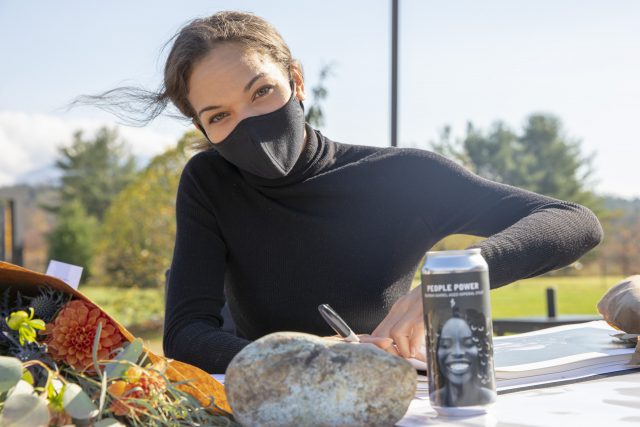

Looking to make a positive impact on your corner of the world? Find out if solar is right for you:
Vermont Candidates for the 2020 Election: It’s time to vote!
We’ve seen how important science is to managing this pandemic. And like the pandemic, what elected officials do with science will determine our collective fate on the climate crisis.
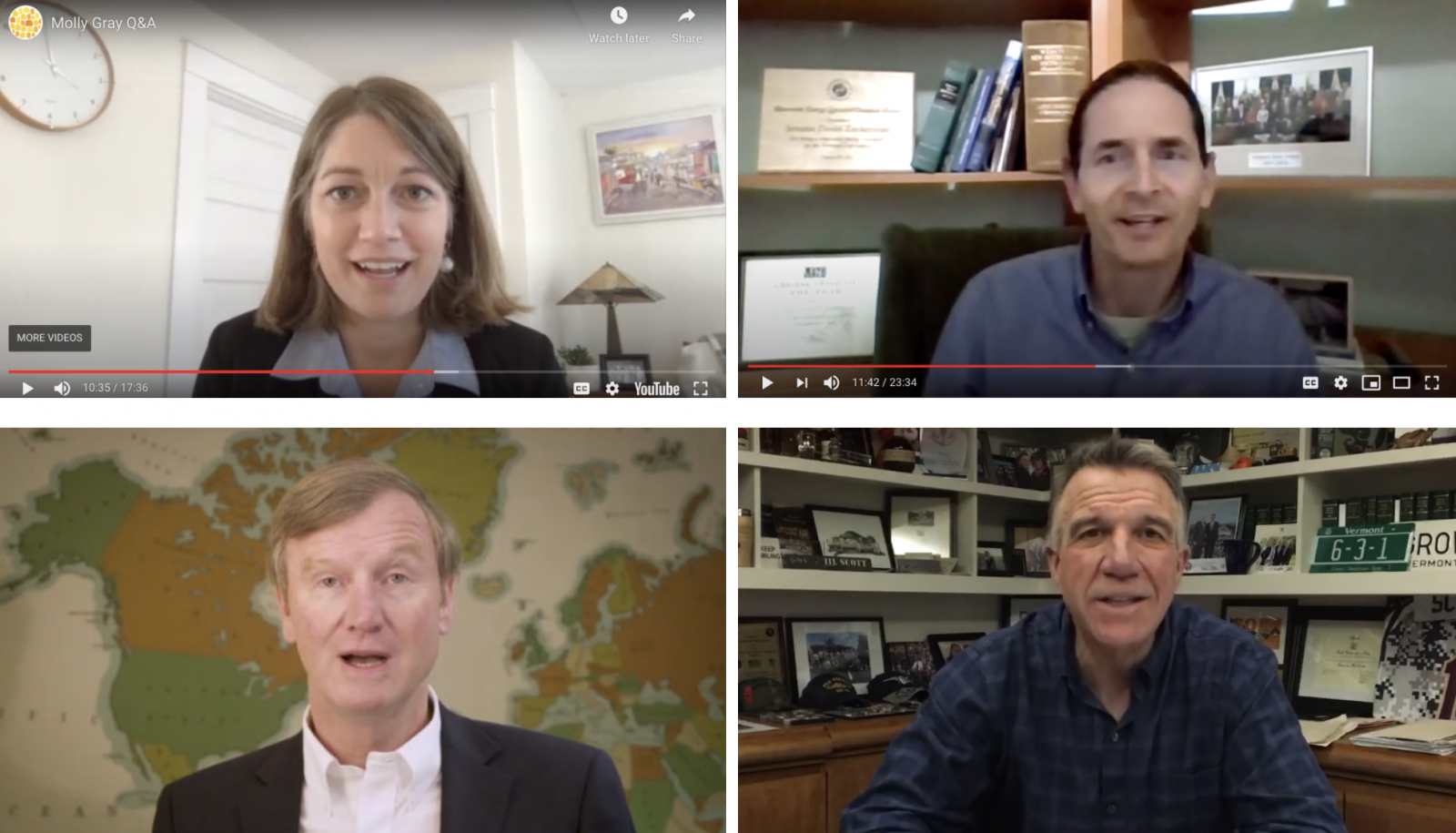

Since SunCommon’s early days, we’ve invited government officials and candidates for office to meet with our employees, share their vision of a clean energy future, and hear from us about this renewable energy business, the jobs it creates, and the benefits we bring to our beloved Vermont. So, with election day 2020 quickly approaching, we invited the major candidates for Vermont Governor and Lieutenant Governor to meet (virtually, of course) with us at SunCommon. We’d like to share these visits with you.
Voting in our local and national elections is our duty to our democracy, and we hope that this information will help inform you as you weigh the candidates. And if you need help registering to vote, we put this page together with useful resources to navigate these new ways of voting, and so that you can be sure your vote is counted.
Candidates for Lieutenant Governor
Molly Gray
Molly Gray met with SunCommon employees to share her thoughts on climate change and clean energy. More of Molly Gray’s policy positions can be found at mollyforvermont.com. (See section on home page: “Preserving our Working Lands and Environment for Future Generations”).
Scott Milne
SunCommon contacted the Scott Milne for Lieutenant Governor campaign 5 separate times, but they declined our offer to meet. His campaign website describes policy positions on clean transportation and energy infrastructure, with a plan for renewable energy and the environment here. (See pages 25 & 26).
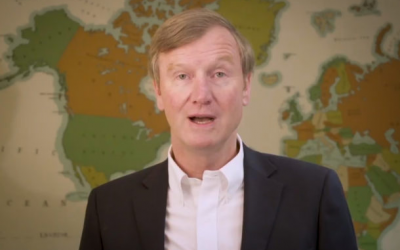

Candidates for Governor
Lieutenant Governor David Zuckerman
Lieutenant Governor Zuckerman met with SunCommon employees to share his thoughts on the climate crisis and clean energy. More of Mr. Zuckerman’s policy positions can be found at at zuckermanforvt.com.
Governor Phil Scott
The Scott campaign also declined our offer to meet after repeated inquiries. Governor Scott did visit SunCommon in early 2019, and here’s a short video of some thoughts he shared then. Mr. Scott outlined the work his administration has taken part in to support the clean energy industry and environmental conversation here.
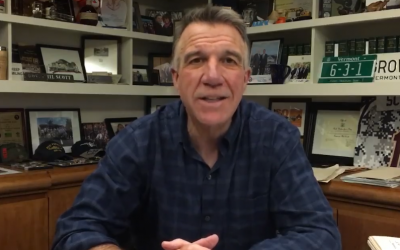

The SunCommon Checklist for Buying an Electric Vehicle
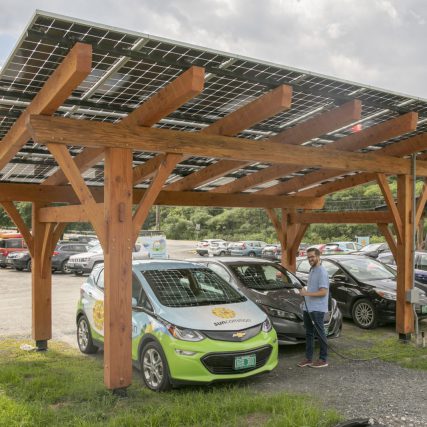

Solar power and electric cars go together like peanut butter and jelly.
We can’t have a clean energy future without getting our vehicles off of fossil fuels. AND we can’t eliminate carbon emissions from our transportation and clean up our air without clean energy to power our cars.
At SunCommon we’re working hard to accelerate the adoption of electric vehicles in our communities. In 2019, we created the Drive Electric Pledge, by which we committed to not purchase any more fossil-fuel-burning vehicles as long as there are viable electric alternatives. So far we have 13 fully electric SunCommon vehicles, and dozens of our staff have switched over to electric for their personal vehicles. With a couple of years of EV driving under our belts, we want to share what we’ve learned so far to help YOU make the switch when the time is right.
Here are some questions you should ask yourself before buying an Electric Vehicle:
Do I want a battery-powered electric car or a plug-in hybrid electric car?
Many car manufacturers are making two kinds of EVs: Battery Electric Vehicles (BEV) and Plug-in Hybrid Electric Vehicles (PHEV). The PHEVs have a battery AND a gas tank. These cars usually can drive 20-40 miles on just electricity, after which they will switch over to the gas tank. BEVs are all electric — no gas tank, no fossil fuels. A PHEV might be the best option for you, and it’s certainly better for the environment than an all-gas vehicle. But to fully address our climate crisis, we need to keep fossil fuels in the ground, so we’ll focus primarily on BEVs for this checklist.
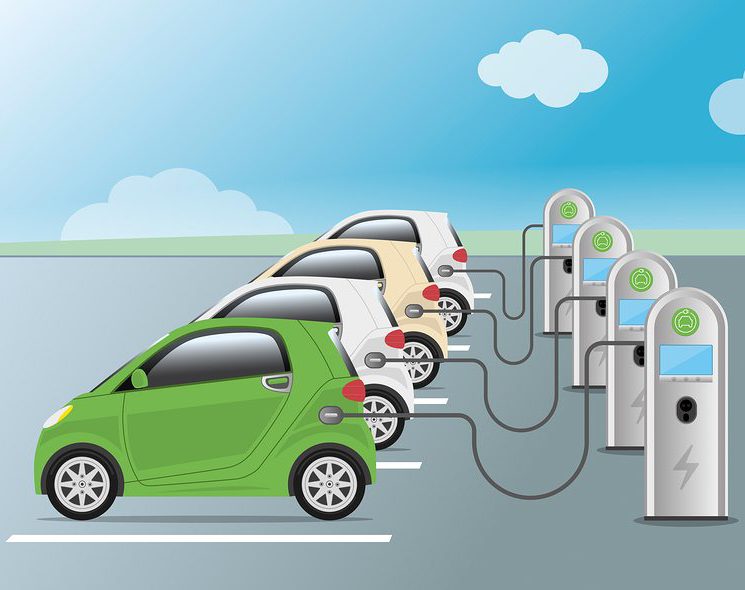

What federal tax credits are available for each model of car?
There is a federal tax credit available for electric car purchases. (If you lease your EV, the dealer gets the tax credit.) The tax credit amount can be as high as $7500 and depends on the make and model, as well as on the total volume of cars that each individual car manufacturer has sold. The maximum tax credit for a particular vehicle is available up to the first 200,000 cars sold. Six months after hitting 200,000 sales, the tax credit is cut in half, and is halved again after another six months. After an additional 6 months, the credit goes to zero. FuelEconomy.gov has all vehicles listed with their available tax credits to help you with your search. As of September 2020, the only car manufacturers that have sold over 200,000 vehicles are Tesla and Chevy.
Are there other tax credits or rebates I need to be aware of?
Yes! The two other places you want to look for discounts on your electric car are those offered by the state and by your local electrical utility. Specific car manufacturers may have additional discounts as well. These rebates change frequently as they are generally offered in smaller batches. Plug-in America has a good website for sharing all of the rebates that are available for interested EV drivers.
Do I want to lease or buy a car?
The primary consideration here is whether the car’s current electric range and features will work for you for the longer term, or whether you’d prefer a shorter commitment. The majority of EVs right now are small to midsize sedans with a range between 150-250 miles. EV manufacturers are promising that new crossovers, SUVs, and trucks will hit the market starting in 2021 into 2022 with expected ranges near 300 miles. That is currently just speculation, so it may take longer. Also, as we mentioned above, leasing and buying are eligible for different incentives. One benefit of leasing a vehicle is that because the dealer will take the tax credits and incentives, you end up with a very low monthly payment.
What range do I need out of my car?
Before you switch over to an electric car, spend some time looking at maps to know how many miles you’ll need from your EV. Ask yourself questions like:
- What is your daily driving round trip?
- What is the longest drive you’ve taken this year?
- Will you need to use this car for long road trips?
- Does your household have another non-EV available?
Once you have an idea of how far you’ll need your EV to go on one charge, check out some cars and their respective ranges — here’s a list of all electric cars on the road today with their ranges. The largest range you’ll find on the road today is a Tesla Model 3 or Model S with about 330 miles in their extended range model. After Tesla, there are a handful of models by Hyundai, Nissan, Chevy, and others with ranges between 230-250. There is another group of vehicles with ranges of 75-150 miles. If you are shopping for a used EV, you’ll also find that most early models have ranges between 80-120 miles. These lower range vehicles are good for a second car or a commuter vehicle but may be frustrating if you do a lot of driving.
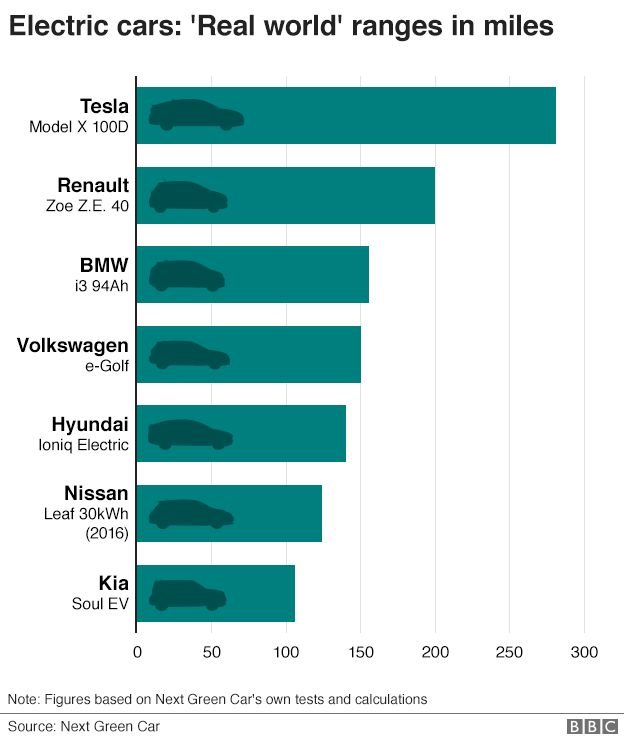

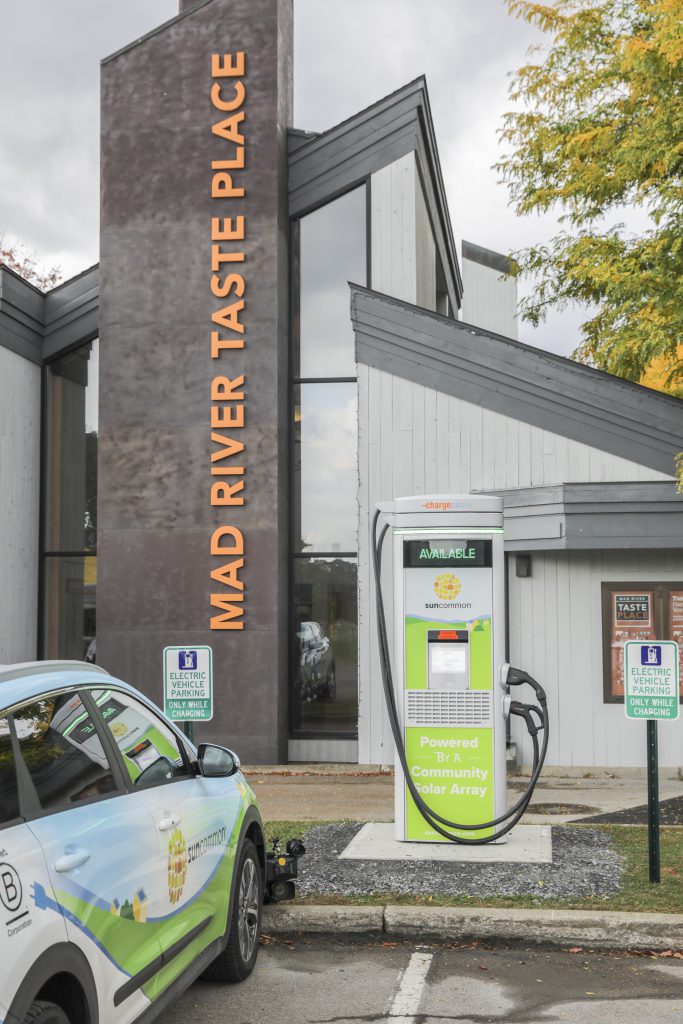

Where can I charge my car? At home? What about work?
Having easy access to charging is an important aspect of being a happy EV driver. While you may be able to get around using only public charging stations, charging at home and starting every day with a fully charged car gives you more options and removes much of the potential for “range anxiety”. Most EVs will come with a standard charger (110 volts) that can plug into a standard outlet. This is a start, but these chargers generally take over 24 hours to fully charge.
The best option is a “level 2” charger (240 volts), which you can have installed at your home. This is the same plug as a dryer uses and can fully charge your car in about 8 hours. Businesses and public buildings are increasingly installing level 2 chargers in their parking lots for the public to use, which is a good option if you don’t have a charger at home. There is an expanding network of public level 2 chargers, and also “fast chargers” which can charge your car up to 80% in 30-40 minutes. (Check out the one we recently installed in Waitsfield, VT!) There are considerably fewer public fast chargers, but we are seeing more of these popping up recently. Here’s a map to look up all the charging options near you!
Does my utility company have any special rates for charging EVs at home?
Driving on electricity is cheaper per mile than a traditional gas car. Both gas and electricity rates fluctuate, but in general, charging your EV battery at home is like paying $1.50/gallon. This Energy.gov website can give you a closer estimate depending on where you live. Something else worth looking into is whether your utility company has special rates for electric vehicle charging. Because charging your car at home brings in more revenue for your electric provider, some utilities will offer a special rate to incentivize home EV charging. As an example, here is a link to Green Mountain Power’s discount charging rates.
What else should I know about electric cars?
When you’re looking at the cost-benefit of electric cars versus traditional fossil fuel cars, you could also consider maintenance costs. There is a lot of information out there, but the latest research says that EV maintenance costs are about 50% of regular gas cars. With no internal combustion engine, fewer liquids to circulate, and the regenerative braking system, oil changes aren’t necessary and there are simply fewer components to fix and replace.
If you ask an EV driver if they’re happy they made the switch, you’ll mostly likely hear a resounding “yes!” Once you get used to it, driving an electric car feels like a no-brainer. It’s cost competitive with a typical gas burning car, it’s a smoother ride, it’s cleaner, it’s cheaper to maintain, and it’s more fun to drive. And reducing our dependence on fossil fuels relies on all of us making this switch. So do your research and test drive one of the many EV models available to you. You’ll be happy you did.
If you still have questions, let us know, or see if we already answered them in our Electric Vehicle FAQs blog!
Fossil Fuel Divestment Q&A
The Divestment Movement has been in the news recently with schools such as the University of California and University of Vermont making firm commitments to remove fossil fuel companies from their investment portfolios. Meanwhile, advocates continue to pressure other schools, businesses, and investment groups to divest their financial investments from fossil fuels, as every day the climate crisis grows more serious. While the early days of the modern divestment movement led by 350.org and other activist groups were primarily symbolic, the movement is picking up speed again as the world and our nation feel increased urgency to keep fossil fuels in the ground.
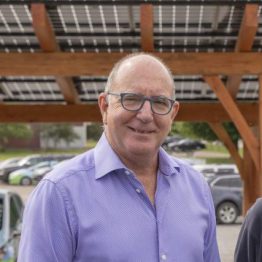

To share some of our perspective on divestment, we sat down with SunCommon’s Co-founder and Co-President, Duane Peterson, who has kept SunCommon’s 401k plan fossil fuel free since 2016.
Why is divestment important?
“The burning of carbon-based fuels is destroying Earth’s atmosphere. The remedy is to leave remaining fossil fuels in the ground and power our economy with clean energy instead. Investments in energy corporations that persist in ruining our planet is not just immoral but really bad financial planning. Just as shares in coal companies are now nearly worthless, oil stocks will tank too as humans turn away from their deadly products.”
Why did SunCommon decide to divest?
“The Divest/Invest movement launched in 2014 to encourage people to get their investments out of corporations harming our atmosphere and instead help grow the sectors restoring our environment. It’s turning away from the harms that got us here while simultaneously supporting the solution. At its core, SunCommon is a market solution to the climate crisis. So it is our obligation to get our own investments out of climate-killing companies and into firms that are doing the right thing for the planet.”
So wait a minute, do we say “divestment” or “divest/invest”? What’s the difference?
“Well, they’re similar, but “divest/invest” has specific relevance to today’s climate movement. The divestment movement has been around for a long time, before we were talking about divesting from fossil fuels. Divestment is most well known for the actions taken to end Apartheid in South Africa starting in the 1960s. Under social and political pressure, businesses and investors pulled their financial investments out of South Africa, which put pressure on the oppressive political class to end the era of legal discrimination, segregation, and racial oppression. This divestment movement was ultimately successful, leading to the democratic election of anti-apartheid activist Nelson Mandela in 1994.
So now with the urgency to address our climate crisis, we’re putting pressure on organizations around the world to divest/invest — to pull their financial interests away from fossil fuels and then invest them into clean energy and low-carbon solutions. So divest/invest specifically brings focus to reinvestment into the future we’re working to build.”
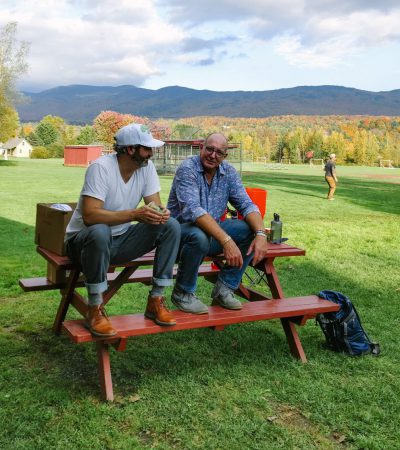

How did you start the process for SunCommon? Were financial institutions supportive? Who were the allies to make this happen for the organization?
“As a Benefit Corporation and certified B Corp, SunCommon is committed to caring for our employees, the communities in which we do business, and the very habitats that sustain our lives. So we offer our employees good pay and great benefits to support them and their families. One of those benefits is the employee retirement program that SunCommon contributes to, and we wanted to make it fossil-free.
Our 401k advisor, Hickok & Boardman, hadn’t done that before, but we chose to work with them because they share our values and provide really great service. They are true pros and are very conversant in the regulations concerning our fiduciary duty to our employees’ retirement funds. So when we committed to figuring out how to divest/invest SunCommon’s retirement plan, they helped us get it done and do it right, which is exactly what we wanted from that trusted partner. Today our employee retirement plan totals $3.3 million, all fossil-free.”
How has divesting impacted overall 401k performance for SunCommon employees?
“The performance of SunCommon’s retirement plan has grown handsomely over the years. Employees can choose from among 16 offerings across the various asset classes to suit their investment needs.”
Who else has done this?
“SunCommon is in really good company here. From the Rockefeller Foundation (funded originally with oil money), to the New York City Employees’ Retirement Fund, to our own University of Vermont — lots of thoughtful and responsible institutions are on board. Over 1,200 organizations have taken this step, committing to divest over $14 trillion dollars out of fossil fuel stocks. That’s really a lot of money to take out of a harmful industrial sector!”
What recommendations do you have for other organizations considering divesting? Or for employees lobbying their company to divest?
“Folks should only divest/invest if they want to rid their investments of stocks in companies that are harming our planet while protecting their portfolios from financial loss like the shareholders of coal stocks have suffered. If that’s true for you, find an expert to help you out. We found a local financial partner who was willing to work with our specific goals, and it worked out very well for SunCommon.”
DISCLAIMER: We’re not offering investment advice but sharing our own experience. You do what’s right for you, after doing your own due diligence based on what works for you. If you’re an employee and want to get your company on board with divesting, share this blog post with your coworkers, or learn more here.
Plastic Free July is a global movement, dedicated to solving the world’s dire plastic pollution problem.
By collectively reducing single-use plastics around the world and using plastic-free alternatives, we can make a difference and clean up our planet. SunCommon has encouraged our staff to participate in the Plastic Free July Challenge and track their plastics usage for the month.
This challenge has really made me pause and think about all the times I interact with plastic in a day—and not just single-use plastics, but the “long-term” plastics that are just as bad for the environment. (They’ll eventually end up in landfills, too. Right?) It got me wondering, is it even possible to go plastic free?
I started the challenge by taking the Pesky Plastics Quiz and then followed up by doing an inventory of all the plastic in my house. I encourage you to do the same—the length of your list may surprise you. Plastic is EVERYWHERE! And I’m realizing that because we interact with plastics so frequently and without ceremony, we’re basically oblivious to its ubiquity.
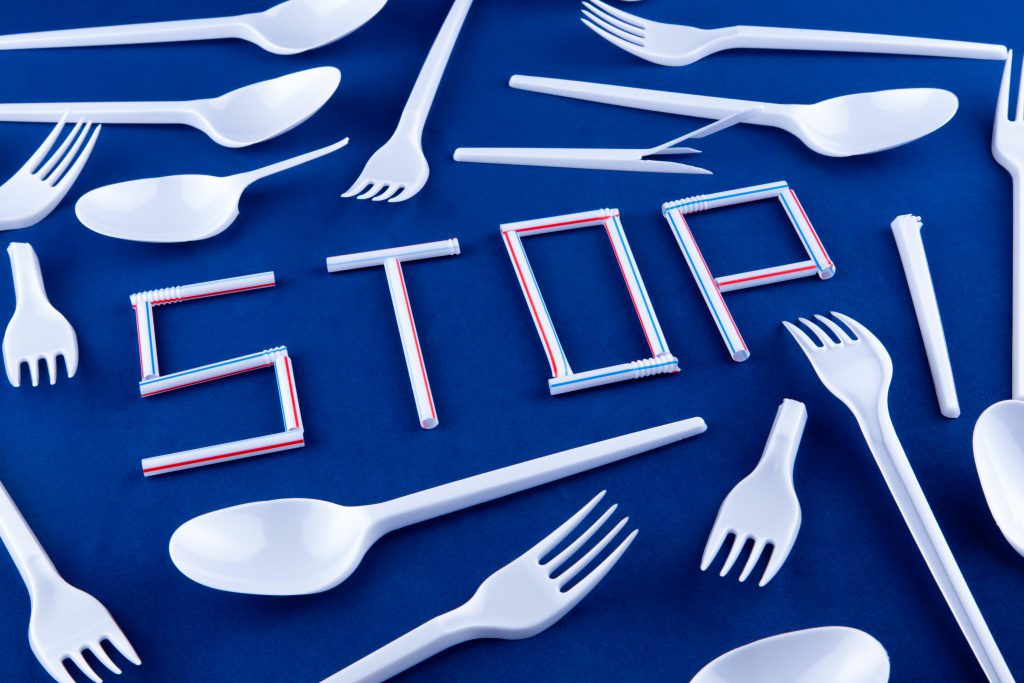

Here’s a few items in my home that are sometimes overlooked as plastic:
Single-Use Plastics:
- Cereal bags
- Caps on liquid cartons (milk, juice, etc.)
- Mascara, and generally all make-up
- Oreos. They come in a plastic tray and a plastic sleeve.
- Toothpaste tube
- Popsicle wrappers
“Long-Term” Plastics:
- Cell phone, charger, headphones
- Kitchen appliances: coffee maker, toaster oven, refrigerator
- The handles on most pots and pans
- TV
- Light switches and outlets
- Sunglasses
- Car Dashboard
So, while going a day without interacting with any plastic is nearly impossible in today’s society, going a day without single-use plastic is totally possible! There are plastic alternatives popping up on the market. And simply being more aware of all the plastic that surrounds can help us make better decisions. For instance, next time you are at the grocery store, take note of how an item is packaged. Opt for the jelly in the glass jar instead of the plastic, and choose milk that comes in a carton instead of a plastic jug. Little decisions like this do matter, and they can make a difference.
Repurpose or Eliminate Single-Use Plastics
If you’re feeling a little guilty about the plastic you do use, that’s normal. The good news is, you can repurpose or eliminate a lot of the single-use plastics in your life!
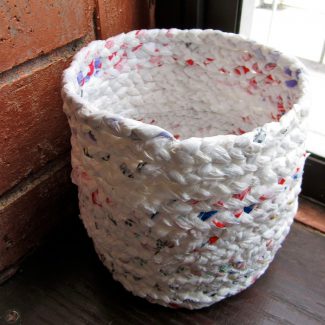

Pinterest has no shortage of ideas for repurposing plastic:
- Turn a detergent bottle into a watering can or sand toy.
- Create a bottle cap curtain.
- Make a plastic bag basket.
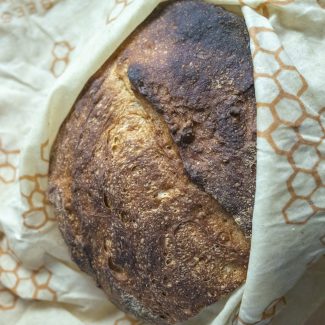

You can eliminate some of the plastics in your life, too! There are lots of plastic alternatives coming to the market. Here are some of my favorites:
- Go plastic free on laundry day with Zero Waste, Plastic Free Laundry Detergent Strips.
- Do away with toothpaste tubes. Try Bite, Toothpaste Bits.
- Swap bottled shampoo for a shampoo bar. Make your own or try Lush Shampoo Bars.
- Replace plastic wrap with reusable Bee’s Wrap.
- Store leftovers in 100% Stainless Steel containers by ECOlunchbox.
What about Recycling?
Recycling, if done properly, can be a great solution to plastic waste. However, recycling is actually rather complicated and many of us have been “wishcycling” for years. Wishcycling happens when we toss plastic items into the recycling bin, without knowing if those items are actually recyclable. The intention is in the right place, but the result is quite the opposite. When non-recyclable items get mixed in with recyclable loads, they are considered contaminated and will be sent to landfills.
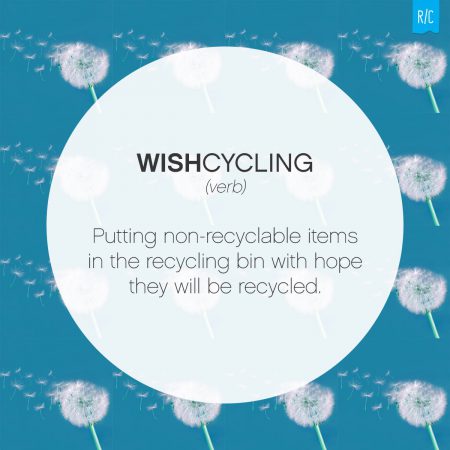

Ever notice the little numbers on the bottom of plastic containers? They represent the type of plastic material the container is made with, but do not necessarily indicate if the item is recyclable. Many plastics can theoretically be recycled, but the cost of recycling it is more expensive than the cost of making new. Plus, the recyclability of each material is dependent on the municipality doing the recycling—so be sure to check out what is accepted in your area.
So, what will your first step be toward reducing or eliminating plastic from your life for Plastic Free July? When you share this post on Facebook or Twitter, be sure to let us know — And don’t forget to @suncommon and use the hashtags #SunCommon and #PlasticFreeJuly!
Summer Sun Safety Tips
The summer is officially here, and everyone at SunCommon is thrilled!
Whether you’re looking forward to backyard BBQs, swimming, or just spending time outdoors with your family and friends, Summer means lots of fun powered by the sun. At SunCommon, we’ve become experts on everything solar and safety, so as we all run out to enjoy the season, we’ve got some important tips to enjoy those summer rays safely.
Let’s start with a crazy fact:
Did you know that our own home state of Vermont has the nation’s second-highest per-capita rate of new melanoma cases, behind only Utah? Whoa! Our beautiful green state is second only to the deserts of Utah when it comes to skin cancer; definitely not the kind of competition we want to keep winning.


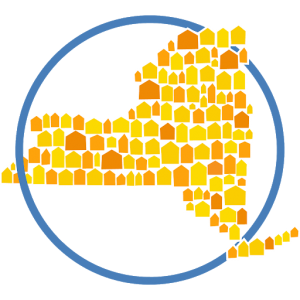

And when we look at raw numbers…
New York is third-highest for newly-reported cases of Melanoma in 2020, behind Florida and California; so this definitely applies to all our friends in New York, as well.
We know that the sun is strong enough to power our homes and businesses, and yes a little sun does help your body produce Vitamin D and boosts your immune system, but hopefully we’re not the first to tell you that your skin isn’t designed to absorb as much sunlight as a solar panel. Too much of this good thing, and you’re probably at risk of developing melanoma.
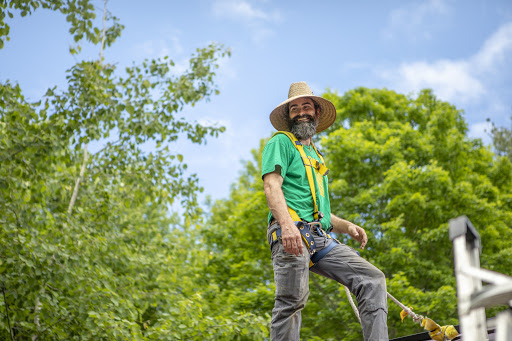

So, what can you do to protect your skin from the power of the sun?
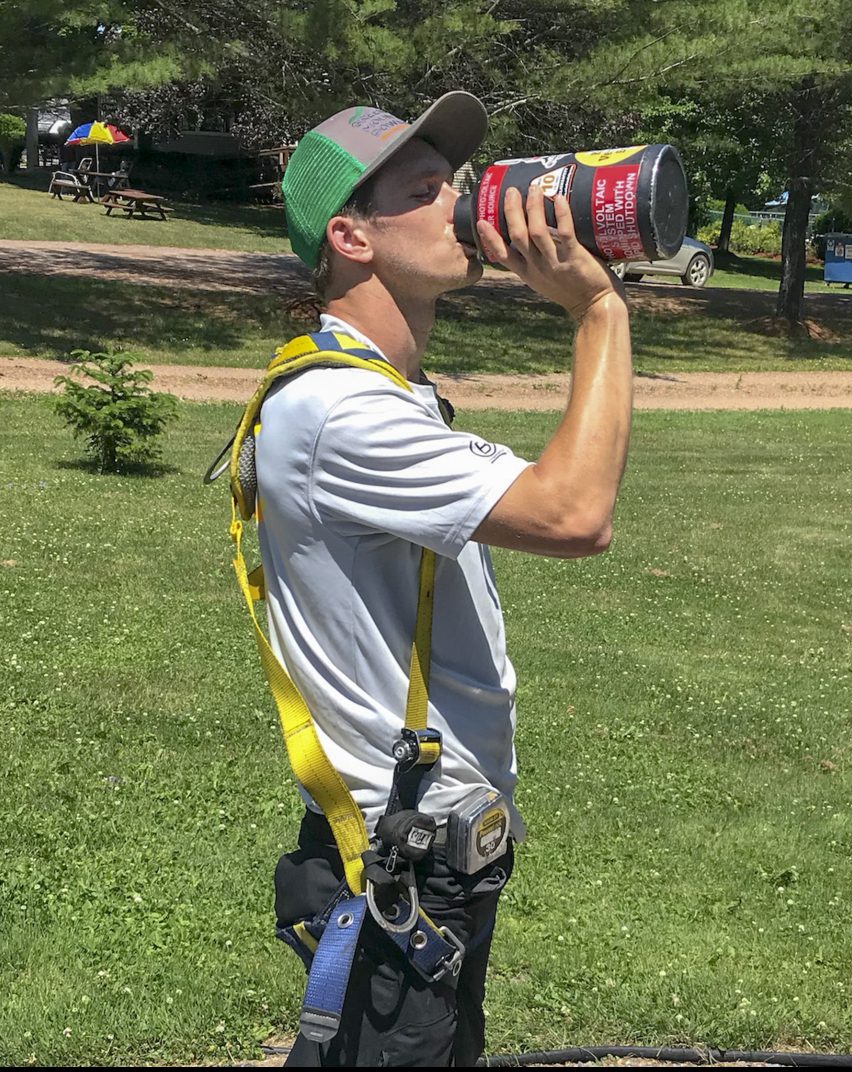

- Apply a broad-spectrum sunscreen that’s SPF 30 or higher, even on overcast or cloudy days. Broad-spectrum sunscreen protects you from both UVA and UVB, the two types of ultraviolet rays that cause burns, premature aging of the skin, and melanoma.
- Reapply sunscreen at least every two hours and after swimming, sweating or drying off with a towel.
- Seek shade, especially during midday hours; leave those peak sun hours for your solar panels to soak up.
- Be extra careful around surfaces that reflect the sun’s rays, like sand and water.
- Wear protective gear like a hat with a wide brim and sunglasses. Wear a t-shirt, beach cover-up, or even better, long-sleeved shirt and pants or long skirt. We’ve outfitted our installers with some great UVP shirts to keep them safe for the long hours they spend up on roofs; consider getting one yourself if you spend extended time out in the sun.
- There’s no such thing as a good “base tan.” A tan indicates damage to your skin. Indoor and outdoor tanning are both dangerous. In 2012, Vermont became the second state to prohibit the use of commercial indoor tanning by youth under age 18.
The key takeaways are that the sun is super powerful, so use sunscreen every time you’re headed outdoors, and reapply often!
As well, there are some early signs of melanoma that you’ll want to look out for; If you find anything suspicious, you should discuss it with your primary care physician, a dermatologist (skin doctor) or a healthcare professional qualified to diagnose melanoma. The first sign of melanoma is typically a new spot on the skin, or a change in the size, shape or color of an existing mole.
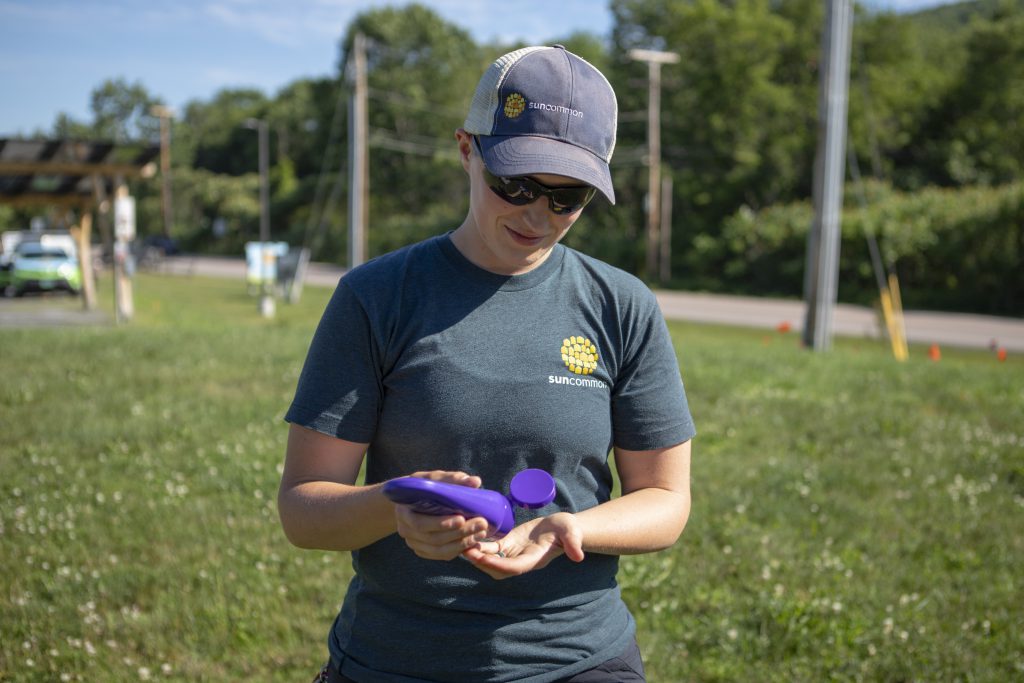

The ABCDE method may help you determine whether an abnormal skin growth may be melanoma:
- Asymmetry: The mole has an irregular shape.
- Border: The edge is not smooth, but irregular or notched.
- Color: The mole has uneven shading or dark spots.
- Diameter: The spot is larger than the size of a pencil eraser.
- Evolving or Elevation: The spot is changing in size, shape or texture.
Because cancer symptoms vary — and not all melanomas develop from moles — it is important to discuss new or unusual skin growths with your doctor.
Now that you’ve got our top tips for staying safe in the sun, get out and enjoy those rays!
And if you’ve got any questions about how to harness those solar rays to power your home, get in touch today!




On October 11, 2016, in solidarity with Standing Rock and in response to the climate emergency we are facing, a team of activists took direct action shutting off the 5 pipelines carrying tar sands oil from Alberta, Canada into the United States. Approximately 2.8 million barrels of crude oil (15% of daily U.S. consumption) was disrupted, leading Reuters to call it, “the biggest coordinated move on U.S. energy infrastructure ever undertaken by environmental protesters.”
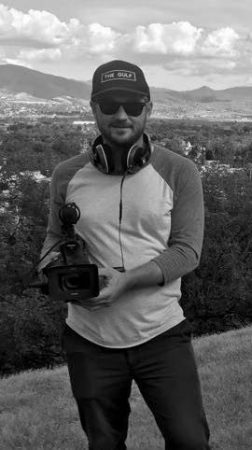

About the filmmaker
The climate emergency and our response to it are Steve’s primary focus as a documentary filmmaker and photographer. In 2016, he co-directed, produced and edited ‘DIVEST!’, a feature-length concert film that chronicles the origins of the fossil fuel divestment movement. He contributed cinematography and editing to the award-winning HBO documentary ‘How to Let Go of the World and Love All the Things Climate Can’t Change’ which premiered at Sundance 2016. From the campaign to stop the Keystone XL pipeline to the Valve Turners direct action, his work has centered around movement-building and keeping fossil fuels in the ground. Earlier in his career, Steve was a biologist in the Gulf coast region working on research and conservation of coastal bird populations. He holds an M.S. in Environmental Policy from Bard College and a B.A. in Environmental Studies from Prescott College.
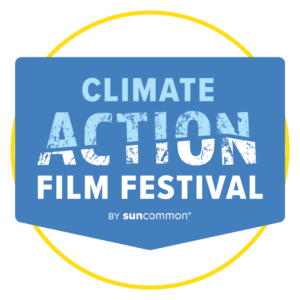



The mission of the Climate Action Film Festival is to bring together stories and filmmakers from around the globe to address the climate crisis.
The first annual Climate Action Film Festival premiered in February 2020. CAFF is a celebration of short films with a focus on solutions to the climate crisis. These times require collective action. Our goal is to promote diverse solutions and unite our efforts in pursuit of a common goal.




A poetic expedition between two islanders, one from the Marshall Islands and one from Kalaallit Nunaat (Greenland), connecting their realities of melting glaciers and rising sea levels. Kathy Jetñil-Kijiner and Aka Niviâna use their poetry to showcase the linkages between their homelands in the face of climate change. Through this video we get a glimpse at how large, and yet so small and interdependent our world is.
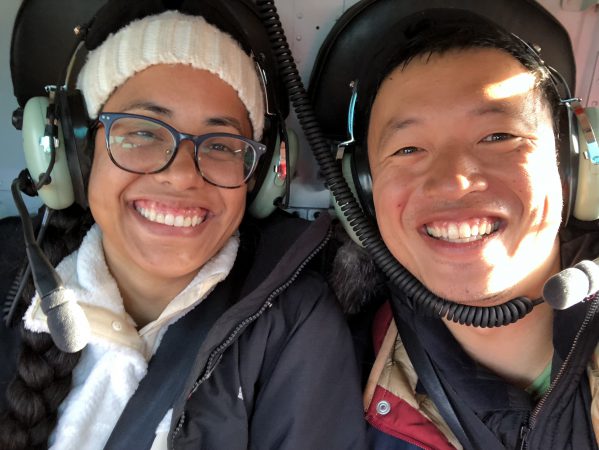

Dan Lin is a professional photographer and photojournalist. Dan entered into the film world as a response to the complexity of issues arising from the Pacific, with a desire to provide a more visceral experience for broader audiences. He is primarily interested in telling stories of indigenous peoples and their connection to the land and sea.
There’s more to the story!
Read more about Kathy Jetñil-Kijiner, Aka Niviâna, and their poetic journey. Our friends at 350 have also produced a behind-the-scenes video explaining the inspiration and process – watch here!
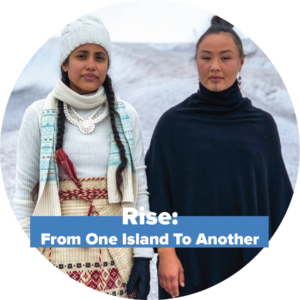





The mission of the Climate Action Film Festival is to bring together stories and filmmakers from around the globe to address the climate crisis.
The first annual Climate Action Film Festival premiered in February 2020. CAFF is a celebration of short films with a focus on solutions to the climate crisis. These times require collective action. Our goal is to promote diverse solutions and unite our efforts in pursuit of a common goal.




Young Voices for the Planet is proud to show the story of Jaysa, a 13-year old girl from Bridgeport, Connecticut who speaks out at public hearings and helps catalyze the opposition to the coal-fired power plant that is causing her asthma. She addresses environmental racism in her community and reflects on the power a single voice can have on creating positive change. Watch and see what happens!


About the Filmmaker:
Lynne Cherry is the author and/or illustrator of over thirty award-winning books for children. Her best-selling books such as The Great Kapok Tree and A River Ran Wild teach children to respect the earth. Lynne is the founder and director of the non-profit Young Voices for the Planet , a 501 (c)(3) tax exempt organization dedicated to helping the voices of environmentally-concerned young people be heard. Lynne is also a movie producer. Her Young Voices for the Planet short films feature youth success stories: California kids helping to get a ban on plastic bags; Florida students saving their school $53,000 in energy costs; An 11-year old German boy planting a million trees… Young people reducing the carbon footprint of their homes, schools and communities.
The mission of the Climate Action Film Festival is to bring together stories and filmmakers from around the globe to address the climate crisis.
The first annual Climate Action Film Festival premiered in February 2020. CAFF is a celebration of short films with a focus on solutions to the climate crisis. These times require collective action. Our goal is to promote diverse solutions and unite our efforts in pursuit of a common goal.






